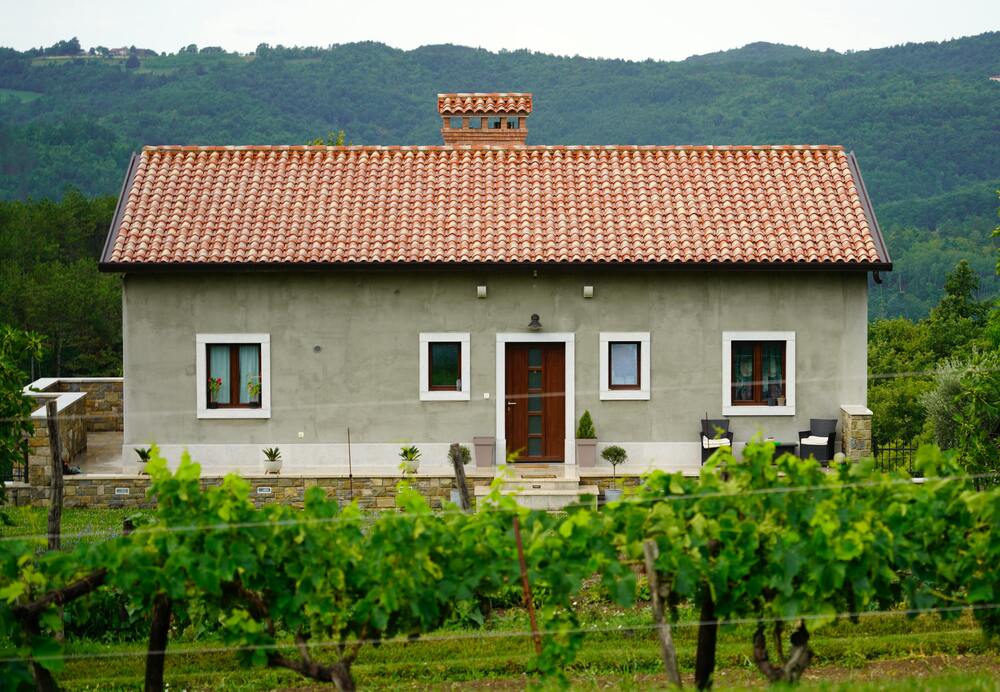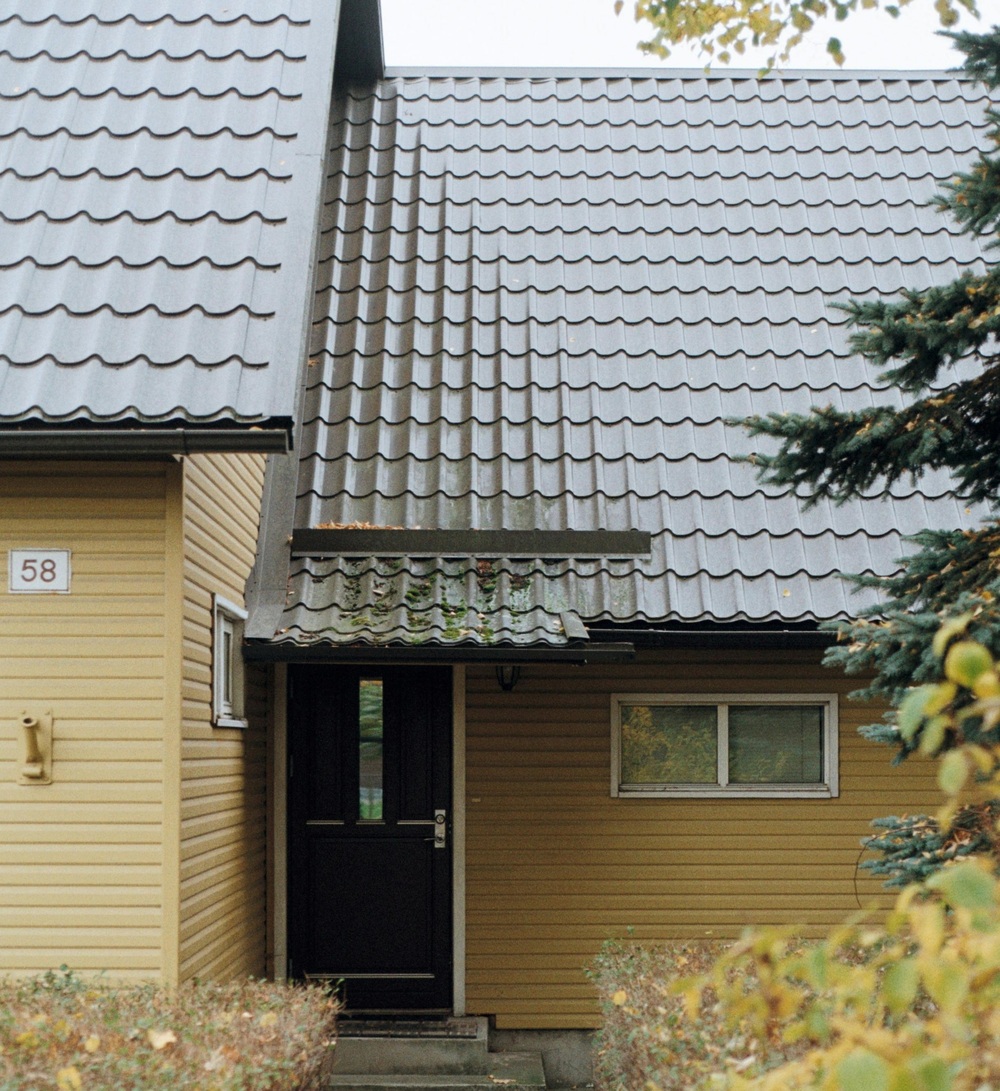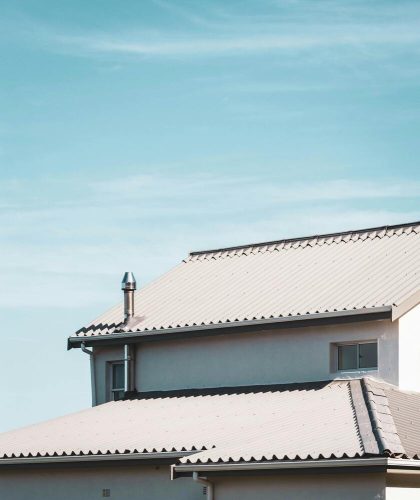Your roof is the single most important protective barrier against the Australian climate. It endures everything from blistering summer UV rays and torrential downpours to coastal salt spray and high-wind gusts. When selecting a new roof or maintaining an existing one, choosing the right material—and understanding its specific vulnerabilities—is essential for long-term property maintenance and crucial to protecting your home’s structural integrity.
This detailed guide explores the most common types of residential roofing materials found across Australia, detailing their advantages and the unique problems homeowners frequently encounter with each type, helping you prepare for the specific challenges your roof faces.
In this blog, you’ll learn:
- Terracotta and Concrete roofing
- Corrugated Iron and Steel Sheeting roofing
- High end Specialized roofing
- Roof maintenance
1. Terracotta and Concrete Tiles

Roof tiles dominate many Australian suburbs, offering robustness and a traditional, heavy-set look. While similar in purpose, their materials have distinct properties and issues that affect their maintenance cycles.
Concrete Tiles are a highly affordable option, widely favoured for their resilience and thermal mass, which helps keep homes cooler by resisting rapid heat transfer. However, their primary vulnerability is permeability. Over many decades of exposure, concrete naturally becomes more porous and begins to absorb water. This absorption significantly adds weight to the roof structure—a factor that must be considered when inspecting older homes—and creates a moist environment that encourages moss and lichen growth. To counter this, concrete tiles often require periodic high-pressure cleaning and re-sealing or painting to maintain full water resistance.
Terracotta Tiles are denser, offering superior durability, and their colour will not fade, giving them a potential lifespan that can easily exceed 100 years. They do not suffer from the same permeability issues as concrete.
A maintenance problem shared by both types of tile is cracking and displacement. Both terracotta and concrete are brittle and can be easily cracked or broken by sudden impacts, such as large hailstones or improper foot traffic during solar panel installation or cleaning. The cement mortar used on the ridge capping—known as the bedding and pointing—will inevitably crack and loosen over time due due thermal expansion and contraction. This failure allows water to penetrate, destabilises the entire ridge, and requires re-pointing and re-bedding to secure the caps against high winds, a major and recurring maintenance cost for tiled roofs.
2. Corrugated Iron and Steel Sheeting (Colorbond®)

Metal roofing, commonly known by the trade name Colorbond®, has become the preferred choice for a vast array of Australian homes, from modern coastal builds to rural properties. Its composition (typically zinc, aluminium, and steel) makes it lightweight, highly durable, and quick to install. It also offers excellent thermal reflection, particularly with lighter colours, contributing to energy efficiency.
Despite its manufacturing strength, the metal roof’s primary enemy is corrosion and rust. This is significantly accelerated in coastal areas, where airborne salt spray creates a highly corrosive environment. Corrosion often attacks cut edges, scratches, and, most importantly, the fasteners holding the sheets down. Near the coast, homeowners must insist on “Severe Marine” grade (Class 4 or 5) fasteners to stand any chance of resisting the harsh conditions.
The most common point of failure is fastener degradation. Metal roofs are secured with hundreds of screws, each relying on a robust rubber washer to maintain a watertight seal. These rubber washers degrade rapidly over time due to intense UV exposure. As the washers perish, water can pool around the screw heads, leading to leaks and eventually, the corrosion and failure of the screw itself. This is often the first maintenance issue homeowners face with a metal roof.
Finally, while metal is durable, it is prone to denting from large, severe hailstones. Additionally, it can transmit heavy rain noise unless quality sarking and insulation are correctly installed underneath, which is essential for comfort in high rainfall areas. The quality of installation is paramount to achieving the expected thermal and acoustic performance.
3. High-End and Specialist Roofing

For homeowners prioritising longevity, aesthetic authenticity, or architectural appeal, high-end materials offer solutions with lifespans that can exceed a century.
Slate Roofing consists of natural stone tiles and is often found on historical Australian homes built in the late 19th and early 20th centuries. The natural stone is virtually impervious to weather, often outliving the structure it protects. The maintenance issue here is typically centred on the fixings. The nails holding the slate in place can corrode over decades, causing tiles to slip and potentially shear off the roof, which is a major safety hazard. Repair requires specialist knowledge, as slate is brittle and easily cracked by improper foot traffic.
Copper and Zinc are primarily used for architectural flashings or entire contemporary roofs. These materials offer incredible resistance to corrosion and virtually eliminate maintenance concerns related to rust. Their major barrier is the prohibitive initial cost. Over time, these non-ferrous metals develop a protective “patina,” which is a desirable aesthetic but must be understood as a natural, long-term change to the roof’s appearance.
4. Alternative and Legacy Materials
A few other materials are present in the Australian market, each with specific maintenance warnings that homeowners need to be aware of.
Asphalt Shingles are sometimes used for their unique aesthetic or on steeply pitched roofs. However, they are generally less reliable in Australia than metal or tiles. Asphalt is highly susceptible to the strong Australian UV index, which accelerates the breakdown of the adhesive and causes the protective mineral granules to shed prematurely, significantly reducing the roof’s lifespan. Shingles are also prone to wind lift and blow-off, making them a less durable option in high-wind zones, particularly in northern Australia.
Asbestos Cement Sheeting is a critical material to be aware of for older homes built before the 1980s. While durable, any damage or necessary removal creates a severe health hazard and must be managed only by specialist, licensed removalists. This sheeting is brittle and prone to breaking when walked on, so homeowners should never attempt to clean or work on these roofs themselves.
5. Proactive Maintenance Strategy

The key to long-term roof health is a material-specific, proactive approach. Timely maintenance will always cost less than an emergency repair.
- For Metal Roofs – Schedule bi-annual inspections of fasteners to check for perished washers and replace screws showing early signs of rust. Regular washing with fresh water is vital, particularly in coastal zones, to remove salt build-up that accelerates corrosion.
- For Tiled Roofs – Annually inspect ridge caps for cracking and loose cement pointing. Moss and lichen should be removed to reduce water absorption and weight. Any cracked or broken tiles must be replaced immediately to prevent hidden internal leaks and timber decay in the roof space.
- Universal Rule – Ensure gutters and downpipes are clear and functional. Water pooling or overflowing anywhere on the roof line is the number one cause of material decay and premature failure across all roofing types, as it compromises protective sealants and concentrates moisture.
When to Seek Professional Expertise
Attempting major roofing repairs, particularly those involving working at heights, complex structural elements, or hazardous materials like legacy asbestos sheeting, is dangerous and requires professional expertise. For Australian homeowners needing expert assessments, reliable re-pointing of tile ridge caps, full gutter replacement, or scheduled maintenance checks to prolong the life of your specific roofing material, Jim’s Handyman provides comprehensive, reliable, and material-aware services across the country.

